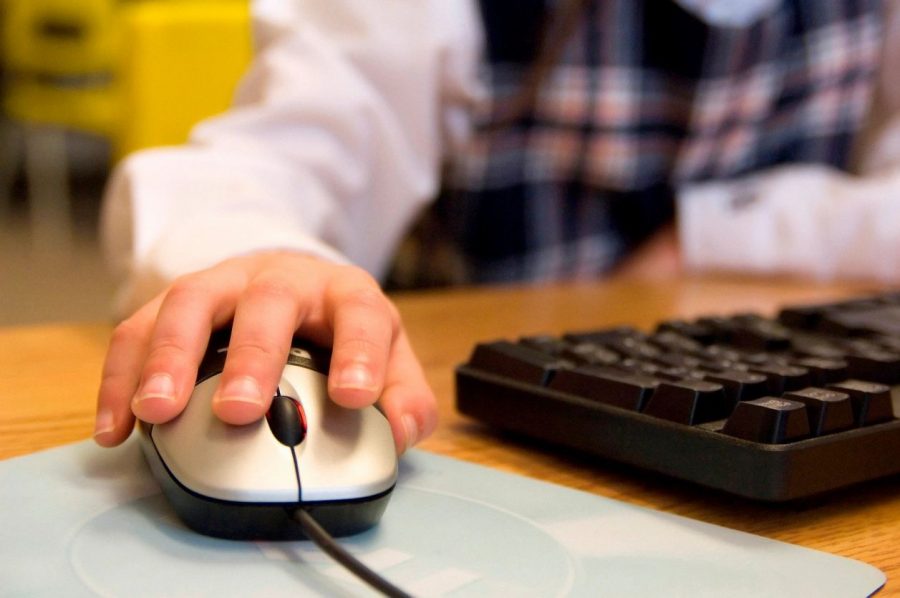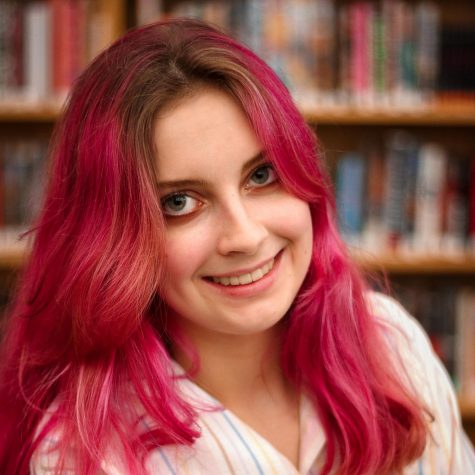Across the country, schools are experimenting with different learning approaches in the midst of the COVID-19 pandemic, including in-seat, hybrid, and fully virtual options. Columbia Public Schools (CPS) had originally planned to return to school with an option of in-person or virtual on August 24th, but the start of the school year was moved to after labor day and to a virtual format due to COVID-19 complications.
Civics studies teacher Melody Grayson said adjusting to this virtual format has been a challenge.
“The first two weeks have been a mixed bag of emotions,” she said. “I’ve gone from being angry at technology to being grateful for virtual learning, or being apathetic towards decisions that I would’ve otherwise had strong opinions about, like deciding if grades should be calculated by total points or percentages.”
Advanced Placement World History teacher Gregory Irwin had similar feelings toward virtual learning. He remarked on its effectiveness compared to in-person learning, describing the difficulty without face-to-face interaction.
“This is a clear few notches down from what happens face-to-face,” Irwin said. “I’m hopeful that students can feel connected to their classmates and teachers in some way, but it’s so hard. In my first block class, almost no one is ready to share their videos at 9 a.m. I get it. My elementary schoolers [kids] are always in their jammies, so I assume most of my 10th graders are too. I’m not judging. It’s just hard to gauge how a class is going with no body language or physical proximity.”
Both Grayson and Irwin adapted to different learning platforms for teaching virtually. Both use Zoom, a teleconferencing platform used for distance learning.
“[In] our first class Zoom, a kid figured out how to annotate my screen while I was sharing it with heart stickers and random line drawings all over our presentation,” Grayson said. “I wanted to cry and laugh at the same time. The student was kind to us and kept the annotation school appropriate. They even enhanced our presentation with heart stickers around our grade scale. That feature is now disabled.”
Irwin said he also uses Schoology, a virtual learning service for classrooms. He has experience with this platform, but said that learning how to use Nearpod, a student engagement platform, has taken time.
“We’ve mostly smoothed out our technical issues. I’m a bit nervous about how our multiple-choice tests are going to work, and the lockdown browser is 90-95% successful,” Irwin said. “But nothing prevents students from having their phones or other tech/books out. So, I feel like I’m going to have to rely on the writings, discussions, and presentations more for a sense of what they’re learning than I have in the past, which I think is a good thing, overall.”
In the end, Irwin said he’s optimistic that learning about and using new technology will make him a better teacher. Given the situation, he understands that he has to be aware of students’ needs.
“I’m a lot more conscious of not going more than 20 minutes of a lecture or discussion without giving the students something to do, whether it’s independent writing or a breakout room,” Irwin said. “The learning curve for new technology can definitely take a while.”
RBHS students have varying perspectives about learning from home without the advantage of face-to-face instruction, and how their experiences differ depending on what grade they’re in.
Freshman Emily Ryan said she’s had a hard time using the virtual platforms because it’s her first year in high school.
“High school is a big place with [more] people and even though this semester I only have half my classes, there’s still so many new people,” Ryan said. “I don’t know most of my classmates, and since I’m not in-person with them, it’s so much harder to get to know them, let alone communicate with them.”
Learning through Zoom has its awkward moments. Ryan described the tricky circumstances of breakout rooms without the normal back-to-school formalities of previous years.
“I’d say the most awkward part of the school year so far [was] when teachers put us into breakout rooms over Zoom,” Ryan said. “There wasn’t any time we could do any get-to-know you activities, and it can be scary to share your thoughts and opinions with strangers.”
Junior Riya Amin said she didn’t have any particularly awkward moments. She did, though, have a funny experience while using Zoom in one of her classes.
“One of my friends told me she had me pinned [on Zoom],” Amin said. “…and was just laughing at me during an APUSH Zoom because I was watching funny videos and eating goldfish, and I thought that was funny.”
Amin said that learning through online platforms made her realize how short of an attention span she has for school. She wasn’t the only student to experience difficulties. Ryan had trouble adjusting to the online format too.
“At first I thought using technology would be easy, and it is, but in the past two weeks I realized that working in front of my computer screen for seven hours a day is really tiring,” Ryan said. “It is also very easy to get distracted. I try my best to take breaks and stretch in between classes and during lunch.”
Despite the challenges, Ryan and Grayson said they’ve found ways to remain optimistic about the school year.
“Overall, I’m feeling a bit overwhelmed with how this school year is structured,” Ryan said. “…but I feel like I could get used to it because no matter how much I miss being in school with my friends, this is the safest option.”
As for Grayson, a small addition to her daily routine helps her through this period. Like Ryan, she incorporates little breaks into her busy routine.
“I sit by a window during the day to stare out of it for a minute or two between Zooms or grading assignments on Schoology or answering the dozens of emails I get,” Grayson said. “It’s been a hoot.”
How is virtual learning going for you? Let us know in the comments below.














































































